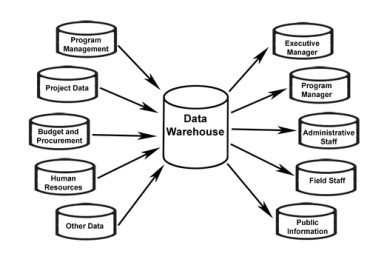
As businesses continue to navigate the complexities of the digital landscape, adopting a Lakehouse architecture will become crucial for maintaining a competitive edge,.
In the dynamic world of data management, the Lakehouse movement is shaking things up in a big way. It’s not just a new trend; it’s a seismic shift that’s rewriting the rules on how businesses manage and use their customer data. Forget the old ways that bogged down data teams with workflow inefficiencies and silos.
Lakehouse architecture offers teams a unified access point to data, creating a centralized platform that benefits various departments, including security, analytics, and marketing. Few technologies truly create a ripple effect that benefits different segments of the business, but Lakehouse architecture’s impact is profound. It enhances data quality and governance, improves cost efficiency, and strengthens security across the board.
3 Lakehouse movement impacts
Let’s take a closer look at three significant impacts that the Lakehouse movement will have on businesses.
1) Single layer for data engineering – Lakehouse CDPs offer a centralized platform for data management, providing zero-copy access across all applications, creating a single environment for data modeling, enrichment, and refinement while also streamlining security and governance processes.
The unified layer supports efficient monitoring and change management, eliminating the need for multiple tools or systems. By enabling zero-copy data sharing, businesses can process and analyze large volumes of data without the overhead of data movement or transformation.
This approach not only enhances scalability but also ensures that customer data remains current and readily available for real-time decision-making and personalization efforts, ultimately improving operational efficiency and data-driven insights.
2) Better data, better results – Data engineering teams will have a simpler technology stack to manage, and this will allow them to spend more time on revenue-impacting work, such as improving the data assets.
The Lakehouse architecture makes sure all data is available in one place, reducing the work of copying and replicating data. The CDP provides the features to enrich the data better. Combined, the Lakehouse CDP gives your teams more time and better tools to focus on making the data asset as good as possible.
When businesses are confident in the quality of their data, Lakehouse architecture facilitates access to unified customer profiles and teams’ abilities to use this data in real time. This isn’t about viewing profiles—it’s about using this integrated data to segment customers and tailor marketing strategies on the fly.
By synthesizing interactions from various touchpoints like online transactions and social media, businesses can craft personalized messages that are both timely and deeply resonant, driving enhanced engagement, loyalty, and conversion rates.
3) Composability – A Lakehouse CDP provides integrations to all of your channels and analytics tools from your data warehouse. You can automate identity resolution, provide access to real-time data for faster personalization, and more easily create and manage large volumes of structured and unstructured data assets. All of these are built on a modern Lakehouse architecture, which also scales with your company and lets you optimize for scale or cost reduction from a single place.
See also: Open Source and the Data Lakehouse: Apache Iceberg and Project Nessie
A final word
The Lakehouse movement is transforming data management by providing a comprehensive, scalable, and efficient system that unifies data engineering, improves data quality, and enables composability. This innovative approach not only streamlines data operations but also empowers teams across various departments to leverage data more effectively.
As businesses continue to navigate the complexities of the digital landscape, adopting Lakehouse architecture will likely become crucial for maintaining a competitive edge, enhancing customer experiences, and driving data-informed decision-making. The Lakehouse movement is not just a technological upgrade; it’s a strategic imperative for organizations aiming to thrive in an increasingly data-centric business environment.





























